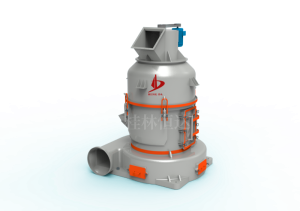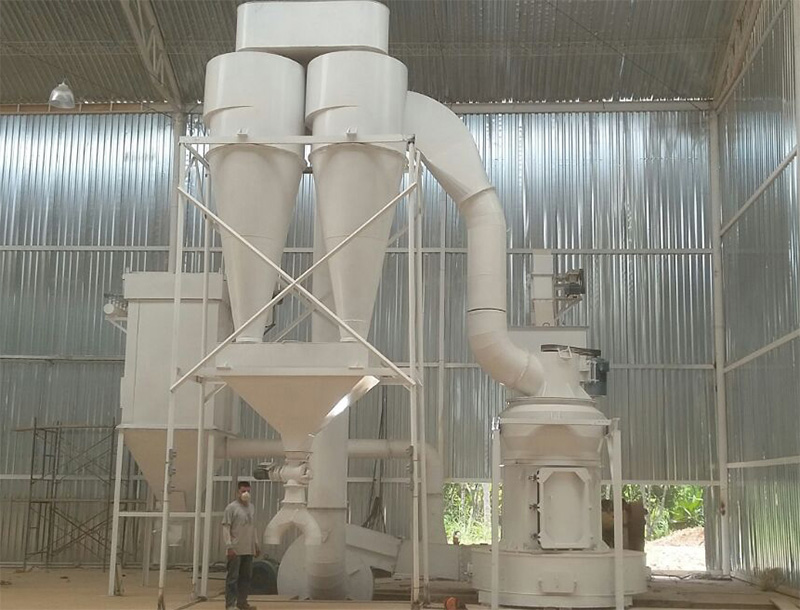Silicon carbide is a kind of carbide, which was accidentally discovered by American Acheson during the diamond experiment in 1891. There is little natural silicon carbide and most of it is man-made. It usually takes quartz and petroleum coke as raw materials, auxiliary recycled materials and waste materials, and after grinding and other processes, it becomes a furnace charge with reasonable ratio and appropriate particle size (in order to adjust the air permeability of the charge, it is necessary to add an appropriate amount of wood chips and an appropriate amount of salt when preparing green silicon carbide) it is prepared at high temperature.
In our investigation, we found that the demand rate of silicon carbide grinding processing and utilization has also increased, so the demand for Raymond mill has also been greatly strengthened, especially highlighting the importance of Raymond Mill in the production process of silicon carbide powder.
The production steps of silicon carbide powder are as follows:
(1) Take silicon carbide raw material, break it by crusher, screen it to silicon carbide particles no more than 5mm, and then shape it with shaping machine to silicon carbide particles no more than 2mm, in which oval particles account for more than 80%, and then acid wash and dry it;
(2) The dried silicon carbide particles are crushed into D50 = 9.5-11.5 by Raymond mill μ M silicon carbide powder. When crushing, the current of Raymond mill host is set to 65-75a, the fan flow is set to 40-50m3 / min, and the speed of analyzer is 400-600 rpm;
(3) Then, the silicon carbide powder is classified by the eddy current air classifier. During classification, the fan flow of the eddy current air classifier is 25-43m3 / min, the rotating speed of the classification wheel is 2600-3300 rpm, and the particle size ds94 = 6.5-5.5 is separated from the classification port μ M finished product a, cyclone outlet ds94 ≤ 5.5 μ M of semi-finished products;
(4) The semi-finished products separated from the rotary outlet of the vortex air flow classifier are re classified by the impeller air flow classifier. During classification, the fan flow of the impeller air flow classifier is 25-10m3 / min, the rotating speed of the classification wheel is 1300-1700 rpm, and the particle size separated from the classification port is ds94 = 4.5-3.0 μ M of finished product B, and the cyclone port separates by-products.
Silicon carbide powder is a fine powder processed from silicon carbide through powder making equipment. It has excellent chemical stability, toughness, earthquake resistance, remarkable electrical properties and high thermal conductivity. Therefore, it is widely used as raw material for abrasive, refractory, corrosion-resistant materials and structural ceramic lamp products. It can also be used for the production of electrothermal components, semiconductor devices and other products.
The domestic silicon carbide micro powder is mainly black silicon carbide micro powder and green silicon carbide micro powder. Since silicon carbide micro powder is mainly used in abrasive industry, there are special requirements for the classification of micro powder. The main standards are: national standard, Japanese standard and European standard. The market is mainly dominated by national standard and Japanese standard, and the export is mainly Japanese standard. For example, jis#800, jis#1000, jis1200, jis#1500 and jis#2000. This can be used See that the fineness of silicon carbide powder is required to be at least 800 mesh. In the case of a wide variety of grinding machines, SCM ultra-fine grinding machine is an ideal equipment for grinding silicon carbide.
As we all know, the finer the fineness of stone powder, the higher its value is, and so is silicon carbide. The ultra-fine mill has ultra-fine grinding ability. Compared with other pulverizer equipment, it has stronger fine powder preparation ability. It uses dozens of grinding rollers to cooperate with three grinding chambers. The materials are ground from the lower grinding chamber, and the fine powder rises with the air flow to the second grinding chamber for grinding again, and then to the third grinding chamber Grinding chamber, grinding step by step, fine powder processing, fineness up to 800-2500 mesh. Improves the value of silicon carbide powder.
The Mohs hardness of silicon carbide is high, and the wear problem can not be underestimated. The ultra-fine grinding roller adopts bearing steel, which is chromium alloy and has stronger wear resistance. Therefore, the service time of the grinding roller is guaranteed and more maintenance time is saved for production.
As a new generation of silicon carbide micro powder mill, the ultra-fine grinding system adopts one-time forming, and the ground silicon carbide powder particle shape has better effect than other effects, which not only improves the value of silicon carbide micro powder products, but also reduces energy consumption. In addition, the use of pulse dust collector and muffler reduces dust pollution and noise, and meets the national environmental protection requirements.
As a high-tech enterprise committed to the research and development of environment-friendly pulverizers, we are proficient in the improvement and innovation of grinding systems. The high-pressure pulverizers, sand powder pulverizers and integrated suspension roller mills we have produced are the preferred products in the powder processing industry, so that you can rest assured, relieved and worry free in use.








